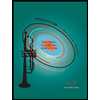12:52 ull e elearning.yu.edu.jo b. Answer these questions: (1) What is the shortest cycle time that will permit use of only two workstations? Is this cycle feasible? Identify the tasks you would assign to cach station. mine the percentage of idle time that would result if two stations were used. 49 of 54 is the daily output under this arrangement? mine the output rate that would be associated with the maximum cycle time. dirgham@xd.ae 290 Chapter Six Process Selection and Facility Layout 5. As part of a major plant renovation project, the industrial engineering department has been asked to balance a revised assembly operation to achieve an output of 240 units per eight-hour day. Task times and precedence relationships are as follows: Duration (minutes) Immediate Task (Predecessor) 0.2 0.4 0.2 0.4 1.2 1.2 1.0 e, f Do each of the following: a. Draw the precedence diagram. b. Determine the minimum cycle time, the maximum cycle time, and the calculated cycle time. c. Determine the minimum number of stations needed. d. Assign tasks to workstations on the basis of most following tasks. Use shortest processing time as a ticbreaker. If ties still exist, assume indifference in choice. e. Compute the percentage of idle time for the assignment in part d. 6. Twelve tasks, with times and precedence requirements as shown in the following table, are to be assigned to workstations using a cycle time of 1.5 minutes. Two heuristic rules will be tried: (1) greatest positional weight, and (2) most following tasks. In each case, the tiebreaker will be shortest processing time. Length (minutes) Immediate Task Predecessor 0.1 0.2 0.9 b. 0.6 0.1 0.2 0.4 0.1 0.2 0.7 0.3 0.2 a. Draw the precedence diagram for this line. b. Assign tasks to stations under each of the two rules. c. Compute the percentage of idle time for each rule. 7. For the given set of tasks, do the following: a. Develop the precedence diagram. b. Determine the minimum cycle time and then calculate the cycle time for a desired output 500 units in a seven-hour day. Why might a manager use a cycle time of 50 seconds? c. Determine the minimum number of workstations for output of 500 units per day. dirgham@xd.ae Chapter Six Process Selection and Facility Layout 291 d. Balance the line using the greatest positional weight heuristic. Break ties with the most follow- ing tasks heuristic. Use a cycle time of 50 seconds. e. Calculate the percentage idle time for the line. Task Time (seconds) Immediate Predecessor Task ->
12:52 ull e elearning.yu.edu.jo b. Answer these questions: (1) What is the shortest cycle time that will permit use of only two workstations? Is this cycle feasible? Identify the tasks you would assign to cach station. mine the percentage of idle time that would result if two stations were used. 49 of 54 is the daily output under this arrangement? mine the output rate that would be associated with the maximum cycle time. dirgham@xd.ae 290 Chapter Six Process Selection and Facility Layout 5. As part of a major plant renovation project, the industrial engineering department has been asked to balance a revised assembly operation to achieve an output of 240 units per eight-hour day. Task times and precedence relationships are as follows: Duration (minutes) Immediate Task (Predecessor) 0.2 0.4 0.2 0.4 1.2 1.2 1.0 e, f Do each of the following: a. Draw the precedence diagram. b. Determine the minimum cycle time, the maximum cycle time, and the calculated cycle time. c. Determine the minimum number of stations needed. d. Assign tasks to workstations on the basis of most following tasks. Use shortest processing time as a ticbreaker. If ties still exist, assume indifference in choice. e. Compute the percentage of idle time for the assignment in part d. 6. Twelve tasks, with times and precedence requirements as shown in the following table, are to be assigned to workstations using a cycle time of 1.5 minutes. Two heuristic rules will be tried: (1) greatest positional weight, and (2) most following tasks. In each case, the tiebreaker will be shortest processing time. Length (minutes) Immediate Task Predecessor 0.1 0.2 0.9 b. 0.6 0.1 0.2 0.4 0.1 0.2 0.7 0.3 0.2 a. Draw the precedence diagram for this line. b. Assign tasks to stations under each of the two rules. c. Compute the percentage of idle time for each rule. 7. For the given set of tasks, do the following: a. Develop the precedence diagram. b. Determine the minimum cycle time and then calculate the cycle time for a desired output 500 units in a seven-hour day. Why might a manager use a cycle time of 50 seconds? c. Determine the minimum number of workstations for output of 500 units per day. dirgham@xd.ae Chapter Six Process Selection and Facility Layout 291 d. Balance the line using the greatest positional weight heuristic. Break ties with the most follow- ing tasks heuristic. Use a cycle time of 50 seconds. e. Calculate the percentage idle time for the line. Task Time (seconds) Immediate Predecessor Task ->
Practical Management Science
6th Edition
ISBN:9781337406659
Author:WINSTON, Wayne L.
Publisher:WINSTON, Wayne L.
Chapter2: Introduction To Spreadsheet Modeling
Section: Chapter Questions
Problem 20P: Julie James is opening a lemonade stand. She believes the fixed cost per week of running the stand...
Related questions
Question
100%
6

Transcribed Image Text:12:52
ull
e elearning.yu.edu.jo
b. Answer these questions:
(1) What is the shortest cycle time that will permit use of only two workstations? Is this cycle
feasible? Identify the tasks you would assign to cach station.
mine the percentage of idle time that would result if two stations were used.
49 of 54
is the daily output under this arrangement?
mine the output rate that would be associated with the maximum cycle time.
dirgham@xd.ae
290
Chapter Six Process Selection and Facility Layout
5. As part of a major plant renovation project, the industrial engineering department has been asked
to balance a revised assembly operation to achieve an output of 240 units per eight-hour day. Task
times and precedence relationships are as follows:
Duration
(minutes)
Immediate
Task
(Predecessor)
0.2
0.4
0.2
0.4
1.2
1.2
1.0
e, f
Do each of the following:
a. Draw the precedence diagram.
b. Determine the minimum cycle time, the maximum cycle time, and the calculated cycle time.
c. Determine the minimum number of stations needed.
d. Assign tasks to workstations on the basis of most following tasks. Use shortest processing time
as a ticbreaker. If ties still exist, assume indifference in choice.
e. Compute the percentage of idle time for the assignment in part d.
6. Twelve tasks, with times and precedence requirements as shown in the following table, are to
be assigned to workstations using a cycle time of 1.5 minutes. Two heuristic rules will be tried:
(1) greatest positional weight, and (2) most following tasks.
In each case, the tiebreaker will be shortest processing time.
Length
(minutes)
Immediate
Task
Predecessor
0.1
0.2
0.9
b.
0.6
0.1
0.2
0.4
0.1
0.2
0.7
0.3
0.2
a. Draw the precedence diagram for this line.
b. Assign tasks to stations under each of the two rules.
c. Compute the percentage of idle time for each rule.
7. For the given set of tasks, do the following:
a. Develop the precedence diagram.
b. Determine the minimum cycle time and then calculate the cycle time for a desired output
500
units in a seven-hour day. Why might a manager use a cycle time of 50 seconds?
c. Determine the minimum number of workstations for output of 500 units per day.
dirgham@xd.ae
Chapter Six Process Selection and Facility Layout
291
d. Balance the line using the greatest positional weight heuristic. Break ties with the most follow-
ing tasks heuristic. Use a cycle time of 50 seconds.
e. Calculate the percentage idle time for the line.
Task Time
(seconds)
Immediate
Predecessor
Task
->
Expert Solution
This question has been solved!
Explore an expertly crafted, step-by-step solution for a thorough understanding of key concepts.
This is a popular solution!
Trending now
This is a popular solution!
Step by step
Solved in 5 steps with 3 images

Knowledge Booster
Learn more about
Need a deep-dive on the concept behind this application? Look no further. Learn more about this topic, operations-management and related others by exploring similar questions and additional content below.Recommended textbooks for you

Practical Management Science
Operations Management
ISBN:
9781337406659
Author:
WINSTON, Wayne L.
Publisher:
Cengage,

Operations Management
Operations Management
ISBN:
9781259667473
Author:
William J Stevenson
Publisher:
McGraw-Hill Education

Operations and Supply Chain Management (Mcgraw-hi…
Operations Management
ISBN:
9781259666100
Author:
F. Robert Jacobs, Richard B Chase
Publisher:
McGraw-Hill Education

Practical Management Science
Operations Management
ISBN:
9781337406659
Author:
WINSTON, Wayne L.
Publisher:
Cengage,

Operations Management
Operations Management
ISBN:
9781259667473
Author:
William J Stevenson
Publisher:
McGraw-Hill Education

Operations and Supply Chain Management (Mcgraw-hi…
Operations Management
ISBN:
9781259666100
Author:
F. Robert Jacobs, Richard B Chase
Publisher:
McGraw-Hill Education


Purchasing and Supply Chain Management
Operations Management
ISBN:
9781285869681
Author:
Robert M. Monczka, Robert B. Handfield, Larry C. Giunipero, James L. Patterson
Publisher:
Cengage Learning

Production and Operations Analysis, Seventh Editi…
Operations Management
ISBN:
9781478623069
Author:
Steven Nahmias, Tava Lennon Olsen
Publisher:
Waveland Press, Inc.